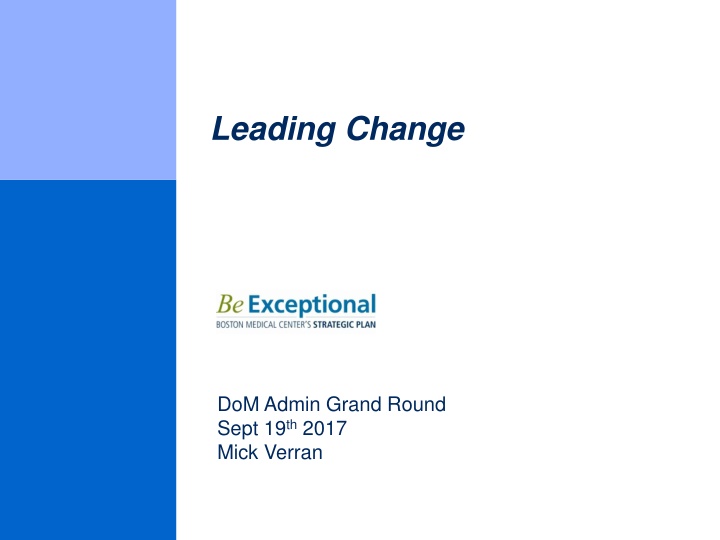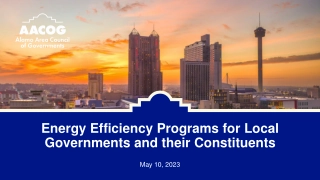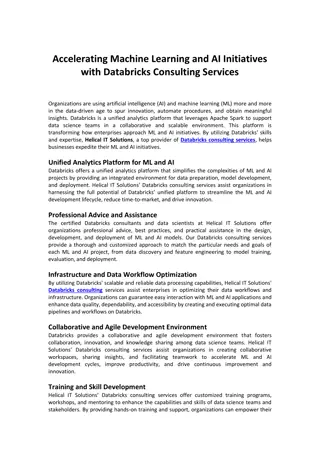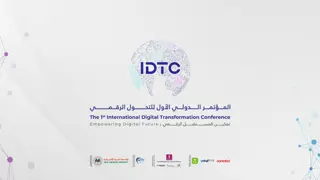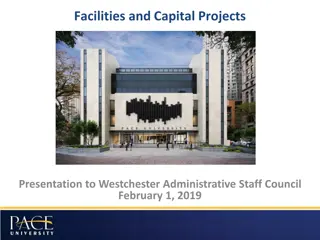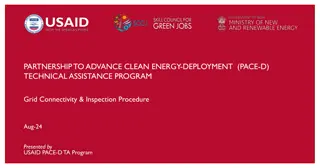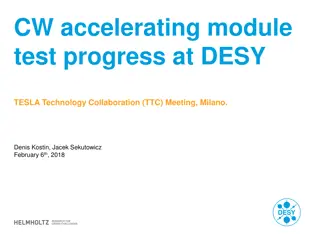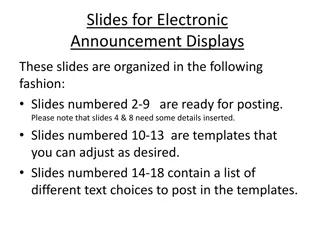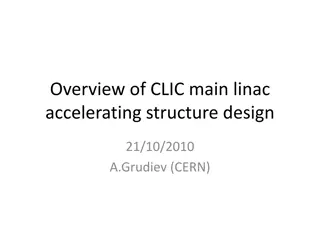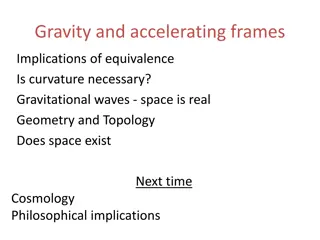Leading Change in Healthcare: Accelerating the Pace of Transformation
The pace of change in healthcare is rapidly increasing, with a significant percentage of change efforts failing to achieve desired outcomes. Key factors influencing the adoption of innovations and the importance of front-line leaders in successful change management are highlighted. Addressing the challenges faced by middle managers and supervisors, the significance of employee engagement, and the impact of participation on decision-making and willingness to change are also discussed.
Download Presentation

Please find below an Image/Link to download the presentation.
The content on the website is provided AS IS for your information and personal use only. It may not be sold, licensed, or shared on other websites without obtaining consent from the author.If you encounter any issues during the download, it is possible that the publisher has removed the file from their server.
You are allowed to download the files provided on this website for personal or commercial use, subject to the condition that they are used lawfully. All files are the property of their respective owners.
The content on the website is provided AS IS for your information and personal use only. It may not be sold, licensed, or shared on other websites without obtaining consent from the author.
E N D
Presentation Transcript
Leading Change DoM Admin Grand Round Sept 19th 2017 Mick Verran
The pace of change in healthcare is accelerating. https://www.cs.umd.edu/~ben/papers/Gillam2009healthcare.pdf
70% of change efforts fail to achieve the target impact. McKinsey Quarterly Transformation Executive Survey 2008
Significant change in behavior is usually required to achieve and sustain gains. 2.6 Fosbury Flop 2.4 Straddle 2.2 Western Roll Scissors 2 1.8 1.61896 1920 1940 1960 1980 2000 Winning height men s high-jump, Summer Olympics
Five perceived attributes of an innovation seem to explain how quickly it will be adopted. 1. How visible the results of the innovation are to observers; 2. The relative advantage of the innovation over prior ideas; 3. Its complexity; 4. How easily a potential adopter can try the innovation; 5. Its compatibility with the beliefs, values, needs, and experiences of the potential adopter. Rogers EM. Diffusion of Innovations. 5th ed. New York: Free Press; 2003
Front-line leaders are vital to success , McKinsey (ibid.) + Prosci survey of 4,500 change leaders
but are usually inadequately equipped. Middle Managers & Front-Line Supervisors Late to the party, when decisions have been made that set the path middle managers must follow. Don t have time to internalize the change before they are required to sell it to employees. Face pressures for short-term efficiency (emphasizing stability and control) and long- term innovation (requiring risk-taking and experimentation). McKinsey (ibid.) + Prosci survey of 4,500 change leaders
Participation improves engagement and decisions and willingness to change. Engagement is lowest in the lower tiers of companies AND amongst employees who deal directly with customers employees who know intimately which aspects of the business annoy customers and which delight them. 2013 Bain & Company survey http://www.bain.com/publications/articles/whos-responsible-for-employee-engagement.aspx There is a strong positive association between involvement in decision-making and employee commitment. 2011 UK Government study http://webarchive.nationalarchives.gov.uk/20141206182038/https://www.gov.uk/government/uploads/system/uploads/attachment_data/file/336651/ bis-14-1008-WERS-first-findings-report-fourth-edition-july-2014.pdf Engaged employees are more productive, record lower absenteeism and turnover, have fewer safety incidents, and make fewer errors. They innovate, make decisions, embrace change, develop new skills, and deliver a superior customer experience. 2015 Gallup survey http://www.gallup.com/poll/188144/employee-engagement-stagnant-2015.aspx
Change Leadership Process
We have a process and tools for leading the people and organizational elements of change. Develop a Shared Vision Create the Plan Engage and Align Execute the Plan Consolidate the Benefits 1 Enroll key stakeholders in a Steering Team 4 Plan the Transformation 7 Engage the entire organization 10 Implement the Go-Live Plan 13 Consolidate and leverage gains 14 Review and apply learnings 5 Develop the team s leadership role 8 Align 11 Help individuals adapt 2 Calibrate needs and expectations processes and new practices 6 Create short- term wins 15 Recognize and celebrate successes 12 Monitor, measure, and adjust progress 3 Create a shared vision 9 Remove barriers Envision Plan Align Execute Consolidate
What makes it challenging to Develop A Shared Vision? Steps & Strategies 1 Enroll key stakeholders in a Steering Team 2 Calibrate needs and expectations 3 Create a shared vision
What makes it challenging to Create the Plan? Steps & Strategies 4 Plan the Transformation 5 Develop the team s leadership role 6 Create short-term wins
What makes it challenging to Engage and Align? Steps & Strategies 7 Engage the entire organization 8 Align processes and new practices 9 Remove barriers
What makes it challenging to Execute the Plan? Steps & Strategies 10 Implement the Go-Live Plan 11 Help individuals adapt 12 Monitor, measure, and adjust progress
What makes it challenging to Consolidate the Benefits? Steps & Strategies 13 Consolidate and leverage gains 14 Review and apply learnings 15 Recognize and celebrate successes
Change Management requires Making the right change Sustaining the gains Management Skills People and Organizational Skills Apply technical knowledge Create shared, meaningful goals Solve problems Align effort Manage the change Facilitate teamwork & collaboration Exercise control over the process Engage individual accountability
Task (what) and Process (how) Behaviors Task-oriented Behaviors Identifying goals Setting standards Assigning responsibilities Giving information and opinions Proposing action Making decisions Reviewing progress Process-oriented Behaviors Encouraging morale Harmonizing conflicts Gate-keeping Testing for agreement Compromising Seeking information Reviewing the process Setting Direction Advocacy Bringing in Information Leading Action Evaluating Options Inquiry
Acts of Leadership EXPLAIN EMBED ENCOURAGE EXEMPLIFY Reinforce Line Of Sight to our goals Take advantage of every opportunity Keep the focus on change Model effective Leadership practices Budget discussions Establish your expectations Stories of; Work assignment What are you doing to improve your results & performance? Goal-setting Reinforce accountability behaviors that drive achievement of our goals, Measures Reward development How are you developing your own skills? Project reviews critical moments that determine the outcome, Provide direct feedback Recognition & Rewards What more can we do to help you? Coach Team meetings successes. Take advice Personal interactions
What are the opportunities for change in your part of BMC? SIGNS Control Optimize Transform Opportunities TASK Effort GOAL RIGHT WAY BESTWAY NEW WAY
Thanks for your time, and input Mick.Verran@BMC.org
